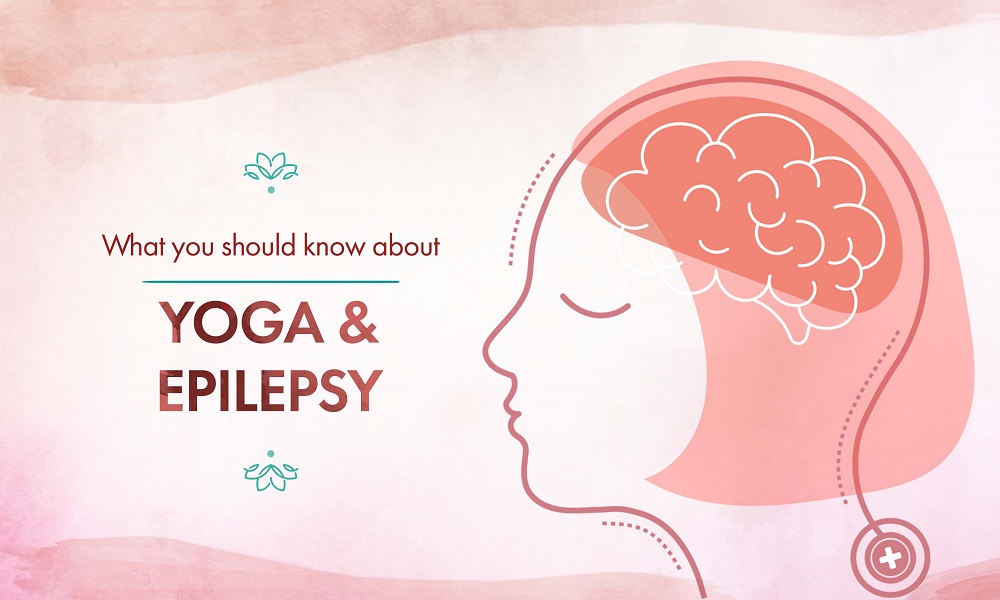What Should a Yoga Teacher Know about Yoga & Epilepsy
Studies on epilepsy show that it is among the five most common neurological disorders prevalent globally. The World Health Organization estimates that at least 50 million people are living with epilepsy. It is a condition characterized by uncontrolled seizures, that may repeat themselves for no apparent reason.
Epilepsy is a neurological disorder, which affects the central nervous system. In other words, it is a disorder of the brain’s electrical system.
A seizure is like an electrical storm in the brain. The affected part of the brain cannot perform its normal tasks during this abnormal electrical storm. People experience sudden changes in movements, sensations, awareness, or behavior. The outward effect can be as dramatic as a wild thrashing movement or as mild as a brief loss of awareness.
However, did you know that there is yoga for epilepsy symptom management. Read on to find out more!
The Causes and Treatment of Epilepsy
Even though it is a common disorder and there are so many studies being done on the subject, very little is known about epilepsy. The causes of epilepsy are still not fully understood.
However, in the majority of cases, the cause of the condition is unrecognized. Studies show it is estimated that about 70% of those affected with epilepsy can lead normal lives with the help of medication. However, 30% of them suffer and cannot live a fulfilled life. Furthermore, there are lots of social stigmas attached to the disease. It means that people living with epilepsy may experience social isolation. Medical professionals and studies recommend exercise as a complementary treatment for epilepsy, as they recognize the fact that exercise improves fitness, energy, mood and relieves stress.
Thereby, additional treatment may include improving overall health and well-being in this way can help reduce seizures and the impact of epilepsy for some people. It can also help people to feel more in control of their health.
Can Yoga Help with Epilepsy?
Yoga for epilepsy may not be commonly known about. The practice of yoga has been proven to provide lasting health benefits. Yoga is not just about some physical movements; asanas (yoga postures) and yogic breathing exercises have a positive impact on the functioning of the nervous system. Controlled breathing, meditation, and gentle yoga postures help to reduce stress [2], well-recognized triggers of epilepsy seizures. Yoga for epilepsy can be used as an additional, complementary treatment when practiced with knowledge and practiced safely.
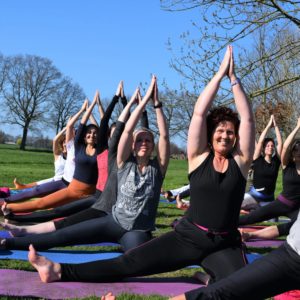
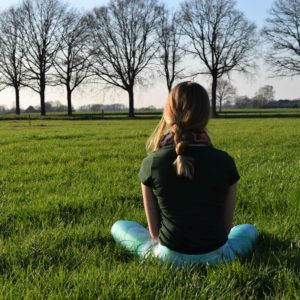
According to studies, a well-balanced Hatha Yoga or Yin Yoga practice can calm down the nervous system, which can reduce the chances of entering into a seizure and might even help to stop the seizure before it becomes full-blown. [3]
Interestingly, if yoga postures, breathing exercises, and meditation are practiced regularly and long enough, these may lead to some permanent changes in the brain. [4] Yoga for epilepsy then becomes a viable option as a supplementary habit for the management of epilepsy along with medication.
There is a chance that after the prolonged specific practice of yoga for epilepsy, positive changes in the body and brain can occur. These changes may help prevent seizures and increase the duration of seizure-free periods. In this way, yoga for epilepsy can be seen as a complementary treatment for those with epilepsy.
How can a Yoga Teacher Help a Student with Epilepsy?
Seizures can happen at any time and for no apparent reason. Therefore as a yoga teacher, you should be informed if a student suffers from epilepsy. Most people will share this kind of information with you, however, to be on the safe side, consider having all new students fill in a basic admission form. In this form, you ask for any injuries, conditions, and other problems that might influence their yoga practice. It is also recommended to state clearly, that students assume full liability for their own health and well-being. You as a teacher can also then suggest specific yoga for epilepsy.
1. Know about first aid measures
If a student informs you about their epilepsy, make sure to familiarize yourself with exactly how the disease manifests for the student. Also, inform yourself clearly about what you should do if your student has a seizure during class.
2. Ask for possible triggers of seizures and lookout to avoid them
Triggers for seizures vary greatly. They can be related to the stress of a changing environment, sensory stimulation like bright lights, low blood sugar right before lunchtime, not enough sleep the night before, or the menstrual cycle. There are no indications that certain postures or cardiovascular exercises trigger seizures. Most epilepsy patients are aware of certain triggers that cause seizures. So ask your student if there is a likelihood that some triggers might occur during the class, what these might be and how you can help to avoid them.
3. Do not treat them with kid gloves
Treating your students that suffer from epilepsy with great delicacy and not permitting them to actively engage in the class is not necessary.
It’s critical to remember that it is very unlikely that certain exercises and physical strain cause a seizure.
In fact, one of the studies in Norway of women with uncontrolled epilepsy showed that regular sessions of aerobic exercise (for example running, walking, swimming, cycling) for 60 minutes, twice a week, for 15 weeks resulted in a significant reduction in the number of seizures they had. [1]
The exercise component of yoga is therefore very helpful and is only very rarely a trigger for seizures. To remain on the safe side, make sure that the student does not over-exert himself or herself and abides by yoga for epilepsy guidelines. Generally speaking, students with epilepsy can do all breathing exercises, Sun Salutations, and most yoga postures.
4. Avoid situations where your student can fall out of a pose
The biggest risk for yoga students with epilepsy is falling out of a pose when having an unexpected seizure.
Therefore, as a teacher, you should suggest specific yoga for epilepsy. This means giving variations of postures that could cause injury if they get out of them. You should also stay with the student for the entire hold of the pose. Postures that would pose such a risk are the Headstand and the Shoulder stand for example.
5. Encourage and motivate them
Keeping all the above-mentioned cautions in mind, if a student becomes motivated to practice challenging asanas such as inversions and hand balances and has a relatively early recognition of impending seizures – consider encouraging them to try with you standing close by. As well, caution them to stay aware of what they are doing, how they feel, and to stop immediately if they feel something isn’t right (just as they would in any other situation). Ideally, it is best to stick with yoga for epilepsy.
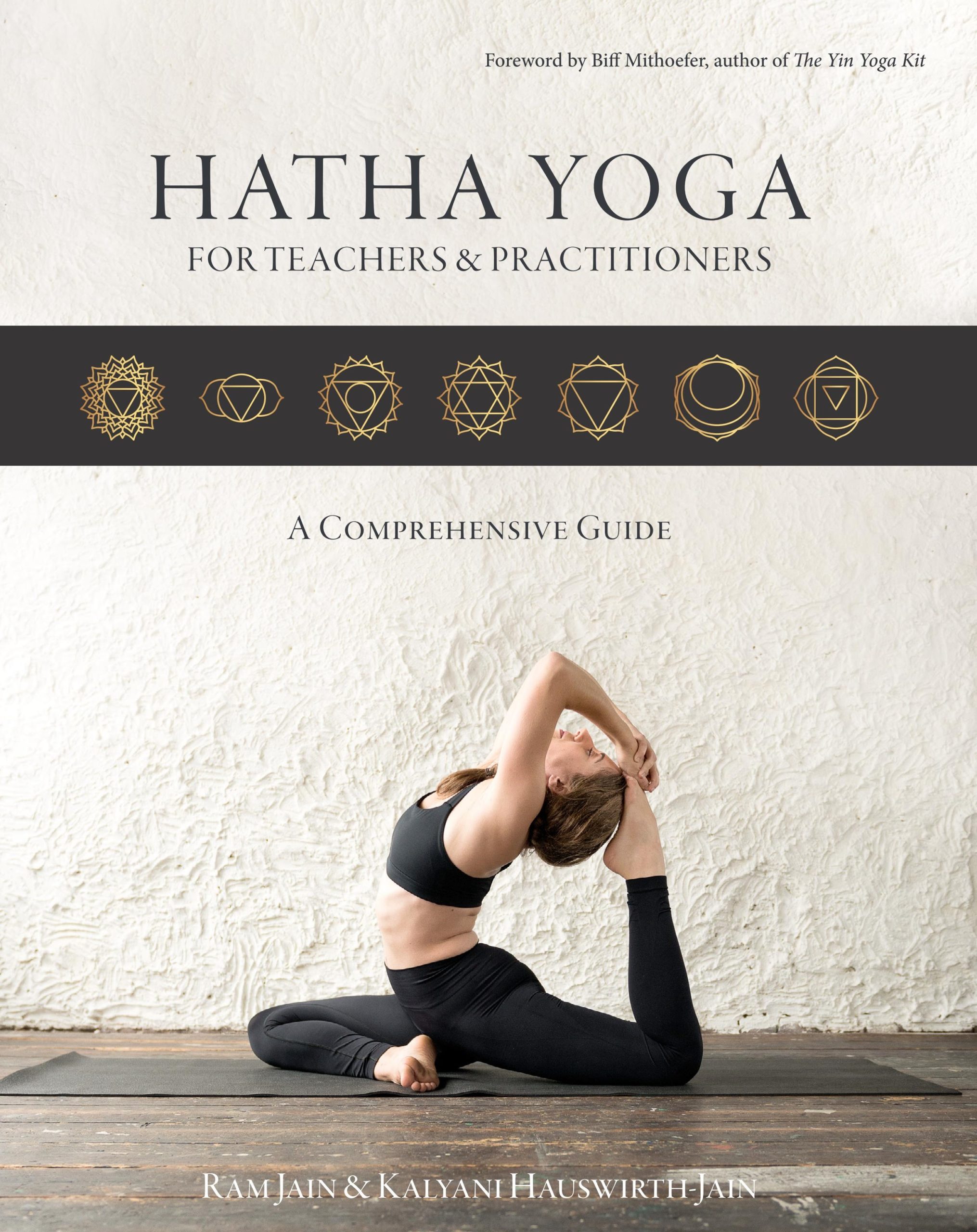
Get a free copy of our Amazon bestselling book directly into your inbox!
Learn how to practice, modify and sequence 250+ yoga postures according to ancient Hatha Yoga principles.
8 Calming and Rejuvenating Yoga Exercises and Poses for Epilepsy
The following 8 exercises and yoga postures are beneficial to calm down the nervous system and are therefore helpful in dealing with the aftermath of a seizure. As mentioned above, with regular practice some epilepsy patients might even experience a reduction in seizures.
1. Anulom Vilom | Alternate Nostril Breathing

At first, we recommend practicing this breathing exercise without retention. So, breathing in 4 counts through the left nostril and exhaling immediately 8 counts through the right nostril. To complete one round, breathe in again through the right nostril for 4 counts and exhale through the left nostril for 8 counts. Once this feels comfortable, you can add an 8 count retention after the inhalation (and before the exhalation).
2. Shashankasana (Balasana) | Child’s Pose

While resting the forehead on the mat and letting your breath become easy and comfortable, you enter the rest-and-regenerate state of your nervous system. The gentle pressure of the forehead against the ground is very calming and soothing. Make sure that your forehead is resting on the mat or a bolster and that also your buttocks are either supported on your heels or on a cushion.
3. Salamba Sarvangasana | Supported Shoulderstand (against the wall)
The slightly increased blood flow toward the head and the pressure in the throat region triggers a physical reflex referred to as the baroreflex. This is one of the many triggers we have in our body that cause us to enter the calm, relaxed state of the parasympathetic nervous system. Because of this effect, the Shoulderstand is actually a very relaxing pose. In order to make this pose more accessible and safer, we suggest teaching it with the feet up against the wall for students with epilepsy.
4. Passchimottanasana | Seated Forward Bend
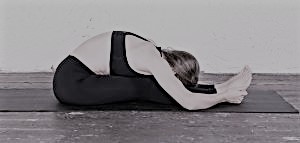
The seated forward bend is an excellent pose to stretch the entire back body and release tension in your lower back and hips. Before entering the pose, make sure that you are sitting high up on your sitting bones. Enter the pose with a straight back and as you reach your maximum flexion, allow your upper back to round and your forehead to rest on your knees (or on support). If your hamstrings are tight, bend your knees and rest them on a folded blanket before assuming the pose described above. Once you are in the pose, try to relax completely while breathing into your lower belly and lower back.
5. Supta Eka Pada Kapotasana | Sleeping Pigeon Pose
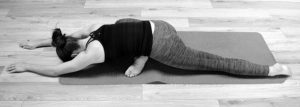
The Sleeping Pigeon Pose lengthens and releases tension deep inside your buttocks (the glutes and piriformis) and the hip flexors (quadriceps femoris and psoas) whilst giving space to breathe into the body and check in with how you’re feeling. The psoas is considered to be a storehouse for stress and anxiety and gently stretching it can help students with epilepsy release long-stored emotions and stress.
6. Seal Pose (Yin Yoga)
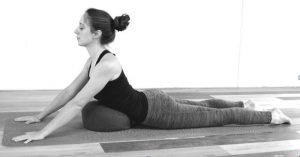
The Seal is an adapted version of the Extended Cobra Pose. Through using cushions under the belly, it becomes a Yin Yoga pose that can be held for 3 – 5 minutes. It is an excellent pose to massage the sacral-lumbar arch and it stimulates the whole spine and abdominal organs.
7. Garland Pose | Malasana

The Garland Pose, aka Yogic Squat, is a pose in which you have to find a balance between activation and relaxation. While you are pushing heels into the ground, pushing your elbows out, and reaching up with the top of the head, allow your Achilles heels to relax. This will enable your inner thighs and calves to lengthen. Make sure that your heels are resting, and if necessary, support them with a folded mat or block.
8. Vrkshasana | Tree Pose
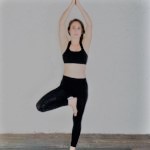
The Tree Pose is an immensely grounding and calming pose, in which you can develop one-pointed focus and a clear mind. Look at a point slightly above eye level and approximately 2 meters away. Look at the point with a gentle gaze and if you are struggling to maintain your balance, direct your breath to the focal point. Hold the pose for at least 1 minute on each side.
A Real-Life Example of Yoga and Epilepsy
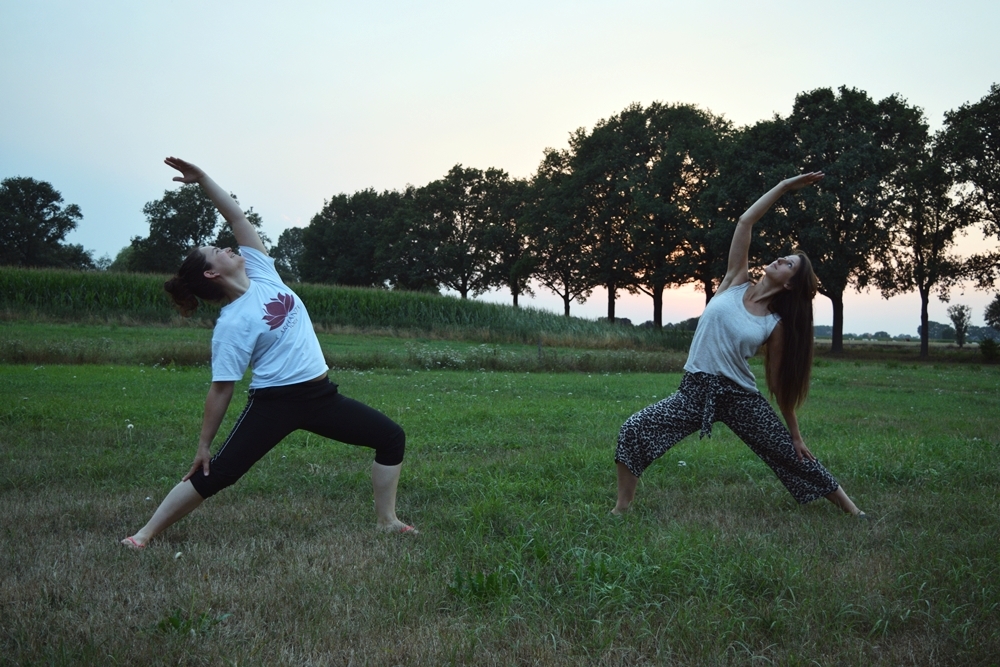
(by Yvon, Arhanta Yoga 200 hour Graduate)
I was diagnosed with epilepsy in early childhood. An epileptic attack is and was often caused by tension or stressful moments. I take medication every day. I have a form of epilepsy that manifests itself in so-called tonic-clonic seizures. [5] During such a seizure I usually faint, my whole body makes shocking movements and I often lose urine. The seizures happen when I am in a resting state, not when I do sports, dance, and other active things.
I live a very active life and work in the sports and fitness industry. I actually live a normal life without much adjustment. But even with medication I regularly experience epileptic seizures.
Since I practice yoga, I can control exciting moments and stress in my life much more. Since I am a certified yoga teacher, I have been able to calm down many moments of activity in my brain and prevent epileptic seizures.
I feel my brain create activity when I am tired when I am experiencing stress, or when I am feeling emotional. As soon as I experience this, I often start immediately with the breathing exercise Anulom Vilom. This breathing exercise is my number 1 to follow to calm down my nervous system and I follow it up with Shavasana (Corpse Pose).
Every day I practice almost all the asanas I want to do, without any problem. Headstand and other inversions, these asanas are no problem at all for me. Balance is the key. If I am tired or over-excited, I take care of myself by taking a power nap. Healthy, nourishing food is very meaningful to me too. But I think this is relevant for everyone. I also make sure to take enough time to charge my own battery.
Nowadays when I am being stressed or over-excited, my boyfriend encourages me to do my breathing and meditation exercises. He has seen the immense difference in my life that yoga has brought. Because of my personal experience, I can whole-heartedly say that 'Yes! Yoga can certainly help with epilepsy!' - by Yvon Tilmans, @yogi_on_a_journey
Resources
[1] Exercise and Epilepsy on epilepsysociety.org.uk
[3]Nonpharmacological treatment of epilepsy
[4] Differences in Brain Structure and Function Among Yoga Practitioners and Controls

Get a free copy of our Amazon bestselling book directly into your inbox!
Learn how to practice, modify and sequence 250+ yoga postures according to ancient Hatha Yoga principles.

